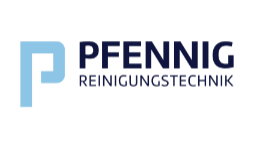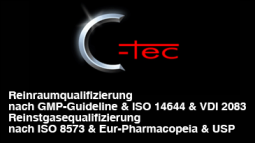Effectively � protection of individuals and product in the pure area combines
0pt; mso para margin right: 0cm; mso para margin bottom: 0cm; mso para margin left: 0cm; mso para margin bottom: .0001pt; mso pagination: widow orphan; font size: 10.0pt; font family: " Times new Roman" ;} Ulrike Koster and Steve MarnachWirksam combines - protection of individuals and product in the pure area contamination protection for products and process within pure space ranges require an effective particle barrier of the pure space clothes - protection of individuals before dangerous materials an effective bio and chemical barrier. Both can be combined, how the contribution by the example of the protective clothing from Tyvek� in detail of DuPont points personnel out Protection. � pure space clothes are work clothes, those the environment against influences, which can proceed from the carrier of this clothes, e.g. skin particles, textile fibers, protect; it is not protective clothing. " , so the definition in BGR 189, section 2 � Begriffsbestimmungen" [1]. As protective clothing is considered according to this BG-rule: �? a personal protection equipment, those the trunk, which is to protect arms and the legs against damaging effects with the work. The different versions of the protective clothing know one or more effects against sch�tzen." Pure space clothes have with priority the function of a personal filter, in order to protect products and processes against pollution by humans as the most serious source of particle emission in the pure area. On the other hand there is also pure space work, which requires the protection of humans from dangerous materials like liquid or firm chemicals or even before biological working materials. Such loads can occur not only in chemical, pharmaceutical and micro-biological work areas, but for example also during the chip production or with painting under pure space conditions. For the protection of humans classical pure space clothes are not sufficient then, necessarily are the employment of chemical protective clothing in combination with other personal protection equipment such as gloves, respiratory protection u.�. Whether pure space clothes or chemical protective clothing, both must fulfill the same basic criteria for its applicableness in the pure area: the suit material must be lint-poor and the suit Design is the tightness of the clothes to consider as well as the danger of accumulating of particles on the surface to reduce. Stretcher comfort, electrostatic derivation ability and - if sterility actual sterilization barness is necessary further pure space fitness requirements. Which for example Schutzanz�ge from Tyvek� of DuPont personnel Protection (Bild1) both when for particle filters to the protection of product and process and as barrier to the protection of the carrier carry out can, in the following one points out. Material properties decide: of the particle support ability? requirements at protective clothing are that them offer protection of products and pure space environment before a contamination by humans and simultaneous protection of humans before liquid or firm and before biological dangerous materials, electrostatic load derive reliably, even no contamination caused and an exchange of body warmth with the environment to make possible are. The materials and the clothing made of it are submitted various examinations, in order to examine their fitness for the employment in the pure area. To the determination of the particle support ability on the one hand the examination serves 3926 [2] after a ITV Testmethode with a testing facility in accordance with VDI, with which the filter effect (barrier) of the material used for the pure space clothing is simulated. For this one sucks loaded air defined with particles by the test fabric and determines the passage and/or support factor as a function of the particle size. And with the Martindale test so called according to ISO 12947 [3] the particle migration is modelful placed behind when carrying the pure space clothing. In the practical application under and pure space clothing rub inevitably together with the movements of the carrier; as consequence of it set free fibers - and skin particles of the carrier set free also at the same time - can diffuse the material of the pure space clothes of the Unterbekleidung. For the protective clothing material Tyvek� are summarized the results of these two tests in Tabelle1. Tabelle1: Particle support ability from Tyvek� to VDI 3926 [2] and Martindale test [3], measured with 23 � 1 �C and 50 � 5% rel. Humid one Parameter Test conditions average Result from 3 and/or. 4 samples of a material Barrier approximately airborne particles in accordance with [2] air loaded with a particle content of 25mg/m � Particle diameter > 0,3�m Testing period: 15 min > 99.2% Particle diameter > 0,5�m Testing period: 60 min > 99.8% Particle migration after [3] (Martindale test) 500 cycles with a test pressure of 9kPa E-0068-TT-07 (*) detection limit? up to the particle emission with clothing in practical application movements of the carrier affect and change the behavior of the clothe material regarding its particle emission. The test procedures place try this behind under controlled load conditions to place. With the Helmke Drum test [4] the complete article of clothing is put into a rotary drum, in order to examine the replacement from particles of the surface of the pure space clothing. With a testing period of ten minutes a particle counter determines the average particle concentration of air in the drum. Depending upon particle emission the pure space clothes are divided in three categories (see Tabelle2). The results of this test for untreated protective clothing from Tyvek� are arranged in Tabelle3. �Table 2: Permissible particle emission of pure space clothes - classification in accordance with Helmke Drum test [4] Category Kind of clothing Particle emission per minute Particle > 0,3 ?m Particle > 0, 5 ?m I Smock < 1 700 < 1 000 Pair of overalls < 2 000 < 1 200 II Smock 1,700 - 17,000 1,000 - 10,000 Pair of overalls 2,000 - 20,000 align=" center" > 1,200 - 12,000 III Smock 17,000 - 170,000 10,000 - 100,000 Pair of overalls 20,000 - 200,000 12,000 - 120,000 �Table 3: Particle emission of the Schutzanzugs Tyvek� Classic, uncleaned and does not sterilize (test conditions: 23 � 1 �C, 50 � 5% relative humidity) Testing method Test criterium Particle emission per minute Span of the results with three samples (Schutzanz�gen) Helmke Drum test IEST RP-CC003. 3 [5] Particle > 0,3 ?m 4,760 - 16,400 Particle > 0,5 ?m 4,370 - 14,800 Particle > 5 ?m 870 - 2,100 Category II III Source: ITV test report No. E-0068-TT-07 the material stretcher conditions testing method next coming to the evaluation of the particle emission is the Body box test so called [5]. In a test chamber for this a person in the pure space clothes implements a number of defined movements and courses of motion. Particle counters determine continuously thereby particle in the chamber, delivered by the carrier/suit. Since however different persons emit many particles with the same actions usually differently, the absolute values are not a sufficient evaluation criterion. With however comparing statements can the same Pr�fperson be met to different suit systems with the Body box test, as this is specified in Tabelle4 for the three suit types from Tyvek�. With this comparison it becomes clear that the Tyvek� Classic plus (see Bild1), equipped with close seams as well as zipper and chin cover - as expected - exhibits the smallest particle emissions and the best particle support ability. �Table 4: Particle emission of the suits from Tyvek� in accordance with Body box test [5]; Clothes are not cleaned and not sterilized; Unterbekleidung for the examination are normal road clothing: Cotton T shirt and jeans. Expiration of the transaction types Particle size Particle emission per minute Tyvek� Industry Tyvek� Classic Tyvek� Classic plus Poor ones move > 0, 3 ?m 134 183 76 > 0,5 ?m 9 11 4 Stop > 0,3 ?m 89 83 34 > 0, 5 ?m 4 2 0 Go > 0,3 ?m 170 390 104 > 0, 5 ?m 13 32 6 Stop > 0,3 ?m 137 73 55 > 0, 5 ?m 7 2 0 Knees bend > 0,3 ?m 1,137 2,961 405 > 0, 5 ?m 77 159 21 Stop > 0,3 ?m 110 117 15 > 0,5 ?m 6 6 0 Source: ITV test report No. E-0068-TT-07��For which pure class of area suitably? How the managing remarks show, there are several standardised tests, which supply comparative data over the barrier characteristics and the particle delivery of material and clothing. So far there is however neither a standard still another authorized recommendation for it, which performance classes or categories should be assigned to which pure classes of area by material and clothing. Thus the user is dependent by pure space clothes on the individual evaluation. It must decide, how relevant which measured values (barrier characteristics and particle delivery) for its respective process are in the pure area. Constructing on the results of measurement and general experiences summarized in this contribution DuPont personnel Protection recommends the pure space allocation specified in Tabelle5 as orientation for the employment of the clothes from Tyvek�. �Table 5: Recommendation of DuPont personnel Protection for the employment of the suit types from Tyvek� in pure classes of area Pure classes of area Chemical protection Bio protection ISO 14644 ISO-3 ISO-4 ISO-5 ISO-6 ISO-7 ISO-8 ISO-9 width=" 9%" valign=" top" > Type 4 Protection from liquid aerosols Type 5 Protection from firm airborne particles Type 6 more limited Protection from liquid nebulas Protection from contaminated particles in accordance with EN14126 US Fed. Hr. 209 1 10 100 1000 10000 100000 � European Union GMP manual � � A/B � C D � Tyvek� Industry � width=" 5%" valign=" top" > � � � ? ? ? � ? ? � Tyvek� Classic � � � � ? ? ? � ? ? � Tyvek� Classic plus � � � � ? ? ? ? ? ? ? The definition of the clothing suitable for the use in a certain pure space environment must be based on the evaluation of the measuring data, which are necessary for the respective process in the pure area. There are several standardised tests, which supply data over the barrier characteristics and the particle delivery of material and clothing. There is however neither a standard still another recommendation for it, which performance classes or categories of material and clothing are to be assigned to which pure classes of area. In accordance with ITV, pure classes of area of the class require thinking village 1000 or more highly to US federal standard 209 usually clothing, which corresponds to category I in the Helmke Drum test to the particle delivery (IEST-RP-CC003.3). �Washed one and sterilized protective clothing from Tyvek� can be used to including pure class of area ISO-5; it is available with selected sales partners of DuPont personnel Protection (further information by email: personal.protection@lux.dupont.com).�Protective clothing from Tyvek�: Protection of individuals and product combine-additionally for function as product protection fulfill Schutzanz�ge from Tyvek� - as initially marked - also the requirement at Typ4B, Typ5 and Typ6-Chemikalienschutzkleidung: Tyvek� Industry and Tyvek� Classic become typically the protection against liquid fog (type 6) and against firm airborne particles (type 5) begun.�Tyvek� Classic plus is a type 4B, 5, 6-Chemikalienschutzanzug with close seams, i.e. he offers additionally still protection against liquid aerosols. This type of suit offers also while handling biological working materials an effective barrier approximately biologically contaminated types of dust in accordance with EN 14126:2003 [6]. �In addition ones to the suits also a various accessories program is available from Tyvek� (Bild2). �Static loading - in the pure area frequently critical beside the particle support ability and barrier against dangerous materials falls as the further criterion for the applicableness in the pure area besides still the electrostatic derivation ability important. Electrostatic unloadings are very feared, because they represent both a danger for the coworkers and can destroy sensitive products. Synthetic materials load themselves well-known measures very easily electrostatically, therefore Tyvek� is already equipped with the production of the fleece on both sides total surface with a antistatic coating. This antistatic equipment fulfills the requirements of EN1149-1: 1995 and EN 1149-1: 2006 with EN 1149-5: 2008 [7]. Newest, of DuPont personnel Protection with the specialized place for explosion protection - mining industry test section - the Dekra Exam GmbH, Bochum, when independent inspection station in order given investigations have result in that from this protection suit material no load transfer dangerous for combustible gas air mixtures (ignitioneffective brush discharge) can proceed. With adequate grounding of the suit and the carrier with a relative humidity of at least 25% Schutzanz�ge from Tyvek� can be used from there into ex zones. That is even valid for the ignitionmost dangerous zone 0: In accordance with ATEX directive 137 [8] that is � a range, within which a dangerous combustible atmosphere is frequently present as mixture from air and inflammable gases, steams or nebulas constantly, during long periods or. "�Largely posting that of DuPont for all protective clothing remarks used Tyvek� pointed out here a small specific weight as well as high tearing, far tearing and abrasion resistance has reliability and use with simultaneous air and steam permeability (Tabelle7). The material consists of very fine Endlosfasern of 100% polyethylene of high density (PE-HD), which under warmth and pressure are consolidated to a fleece. The protective clothing from Tyvek� for applications is offered with limited length of application (as one-way protective clothing so called). Thus on the one hand one is guaranteed equal lasting high barrier and protective effect of the material. On the other hand this simplifies protective clothing logistics at the same time, since cleaning cycles are void. �Table 7: Physical characteristics of the protective clothing material Tyvek� Characteristic Test method Result Abrasion resistance EN 530 (Method 2) > 100 cycles Basis weight EN 12127 41 g/m � Color - White Bending tear firmness EN ISO 7854 (method B) > 100,000 cycles (visual terminator point) Puncturing firmness EN 863 12.9 N Surface resistance with 25% of relative humidity EN 1149-1: 1995 and EN 1149-1: 2006 with EN 1149-5: 2008 < 5 x1010 (inside and outside) Ultimate tensile strength (MD/XD) EN ISO 9073 16.6 N /24.4 N MD: Direction of travel, XD: Transverse direction �Finally it is still marked that for the user low costs arise when disposing of the clothing, since Tyvek� does not kritischen" �; - for example halogenhaltigen - contains additives (e.g. disposing of in a local incineration plant). With dangerous materials contaminated clothing one should dispose of after use naturally as the appropriate dangerous material (it to be valid the appropriate national and/or regional laws and regulations) .x x x x x x x the AutorenUlrike Koster is Life Sciences marketing manager with DuPont personnel Protection, Luxembourg email: ulrike.koster@lux.dupont.comSteve Marnach is Life Sciences Sales Specialist with DuPont personnel Protection, Luxembourg. Email: steve.marnach@lux.dupont.com literature [1] BGR 189: Employment of protective clothing. Edition April 1994, updated reproduction version October 2004, HVBG federation of the commercial professional associations (Hrsg.) [2] VDI 3926 sheets 1:2004 - 10: Examination of filtering mediums for Abreinigungsfilter - standard examination for the comparative evaluation of abreinigbaren filtering mediums. [3] DIN EN ISO 12947: Textiles - determination of the resistance to rubbing of textilen planar formations with the Martindale procedure [4] Helmke Drum test in accordance with IEST-RP-CC003.3: Garment system Considerations for Cleanrooms and Other control LED Environments. Hrsg.; Institutes OF Environmental Sciences and Technology (IEST), Arlington Heights, the IL/CUSA [5] Body box test in accordance with IEST-RP-CC003.3 (S. [5]) [6] regulation over security and health protection with activities with biological working materials (bio material regulation - BioStoffV) of 27. January 1999 [7] EN 1149-1: 1995, EN 1149-1: 2006, EN 1149-5: 2008: Protective clothing - electrostatic characteristics [8] guideline 1999/92/EG: Minimum regulations for the improvement of the health protection and the security of the employees, those by combustible atmospheres to be endangered can (ATEX directive 137)� mso] > st1 \: * {behavior: URL (#ieooui)} -- /* Font definition * @font-face {font family: Wingdings; panose-1: 5 0 0 0 0 0 0 0 0 0; mso font charset: 2; mso generic font family: car; mso font pitch: variable; mso font signature: 0 268435456 0 0 -2147483648 0;} @font-face {font family: " Ms Mincho" ; panose-1: 2 2 6 9 4 2 5 8 3 4; mso font old: " Ms ?? " ; mso font charset: 128; mso generic font family: decay; mso font pitch: fixed; mso font signature: - 1610612033 1757936891 16 0 131231 0;} @font-face {font family: Univers LightOblique; panose-1: 0 0 0 0 0 0 0 0 0 0; mso font charset: 0; mso generic font family: swiss; mso font format: more other; mso font pitch: car; mso font signature: 3 0 0 0 1 0;} @font-face {font family: ZapfDingbats; panose-1: 0 0 0 0 0 0 0 0 0 0; mso font charset: 0; mso generic font family: decorative; mso font format: more other; mso font pitch: variable; mso font signature: 3 0 0 0 1 0;} @font-face {font family: " \ @MS Mincho" ; panose-1: 2 2 6 9 4 2 5 8 3 4; mso font charset: 128; mso generic font family: decay; mso font pitch: fixed; mso font signature: - 1610612033 1757936891 16 0 131231 0;} /* Style definition * p.MsoNormal, li.MsoNormal, div.MsoNormal {mso style parent: " " ; margin top: 12.0pt; margin right: 0cm; margin bottom: 0cm; margin left: 0cm; margin bottom: .0001pt; mso pagination: widow orphan; font size: 12.0pt; mso bidi font size: 10.0pt; font family: " Times new Roman" ; mso fareast font family: " Ms Mincho" ; color: black;} more p.MsoHeader, more li.MsoHeader, more div.MsoHeader {margin top: 12.0pt; margin right: 0cm; margin bottom: 0cm; margin left: 0cm; margin bottom: .0001pt; mso pagination: widow orphan; tab stop: center 8.0cm right 16.0cm; font size: 12.0pt; mso bidi font size: 10.0pt; font family: " Times new Roman" ; mso fareast font family: " Ms Mincho" ; color: black;} in {mso style type: export only; text decoration: none;} span.msoIns {mso style type: export only; mso style name: " " ; text decoration: underline; text underline: single;} splinter msoDel {mso style type: export only; mso style name: " " ; text decoration: LINE through; color: talk;} @page Section1 {size: 21.0cm 842.0pt; margin: 113.45pt 70.9pt 49.65pt 99.25pt; mso header margin: 36.0pt; mso footer margin: 36.0pt; mso PAPER SOURCE: 0;} div. Section1 {PAGE: Section1;} /* cunning definition * @list l0 {mso cunning ID: 1364549178; mso cunning type: hybrid; mso cunning template ids: - 542341238 67567621 67567619 67567621 67567617 67567619 67567621 67567617 67567619 67567621;} @list l0: level1 {mso level NUMBER format: bullet; mso level text: ?; mso level tab stop: 36.0pt; mso level NUMBER position: left; text indent: - 18.0pt; font family: Wingdings;} @list l1 {mso cunning ID: 1450783112; mso cunning type: hybrid; mso cunning template ids: - 967174944 67567621 67567619 67567621 67567617 67567619 67567621 67567617 67567619 67567621;} @list l1: level1 {mso level NUMBER format: bullet; mso level text: ?; mso level tab stop: 36.0pt; mso level NUMBER position: left; text indent: - 18. 0pt; font family: Wingdings;} ol {margin bottom: 0cm;} ul {margin bottom: 0cm;} --> 0pt; font family: " Times new Roman" ;} jpg" o: title=" 2008-0124-Titel-72dpi" /> ��
This text was translated automatically.









